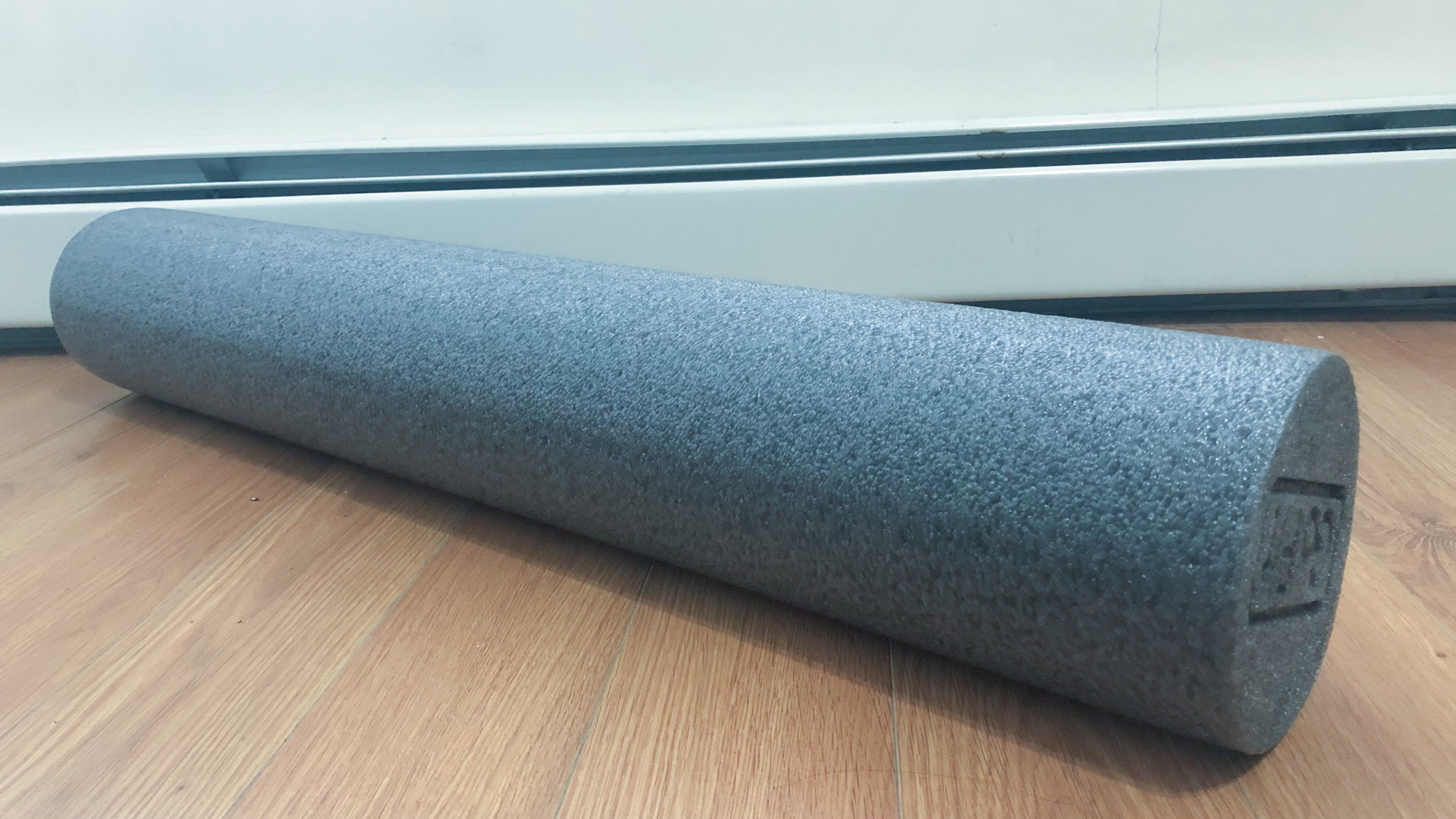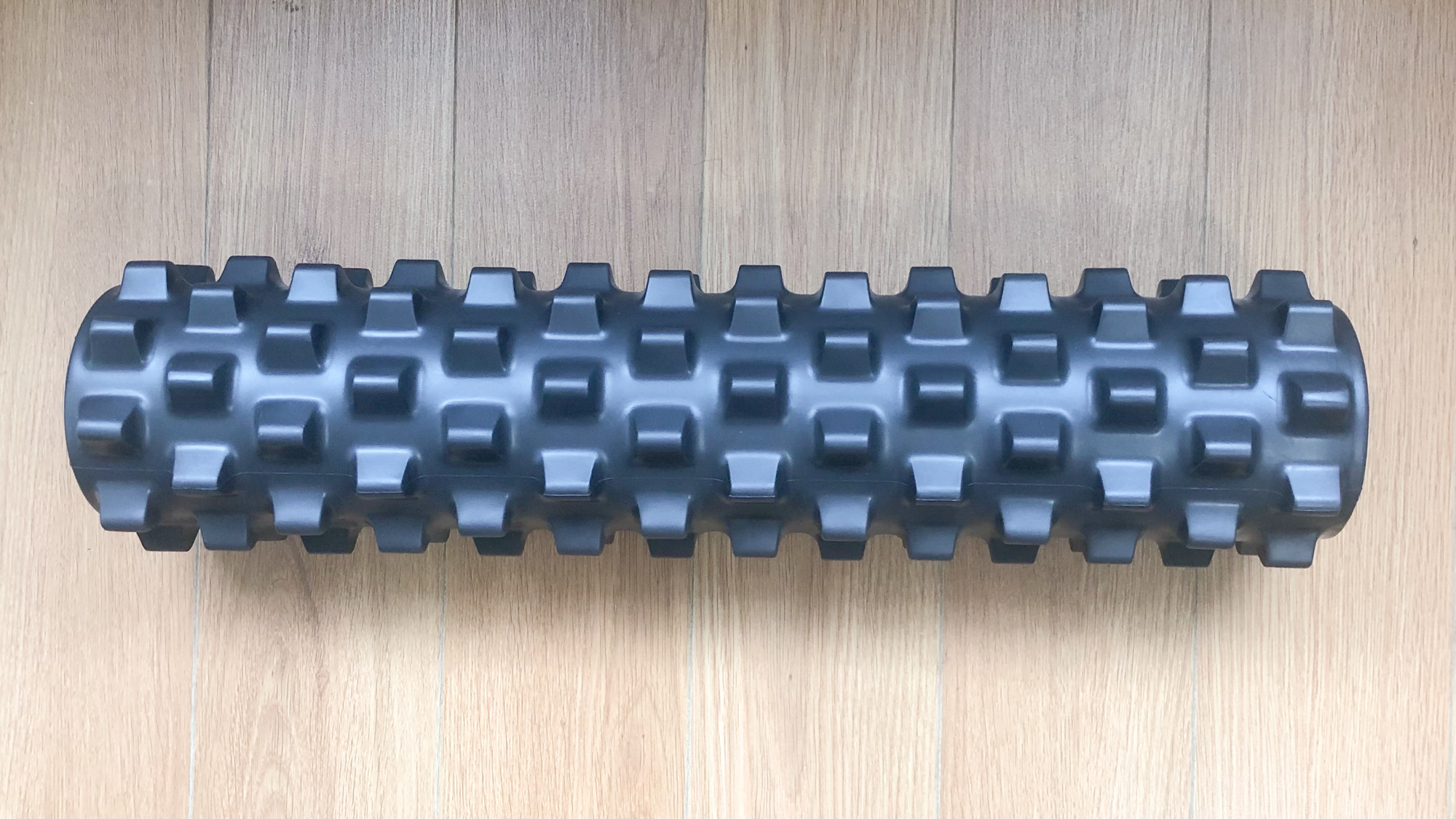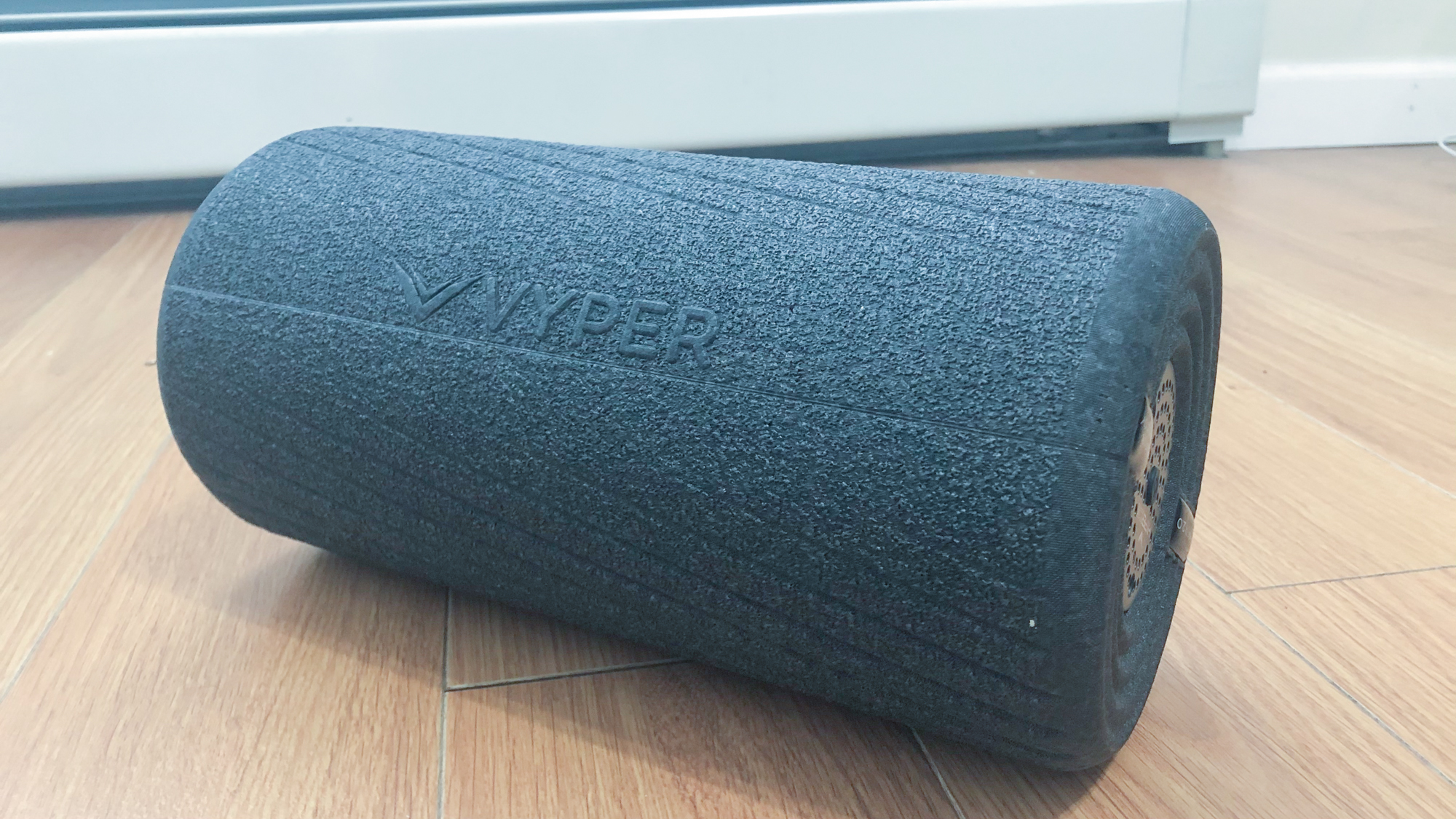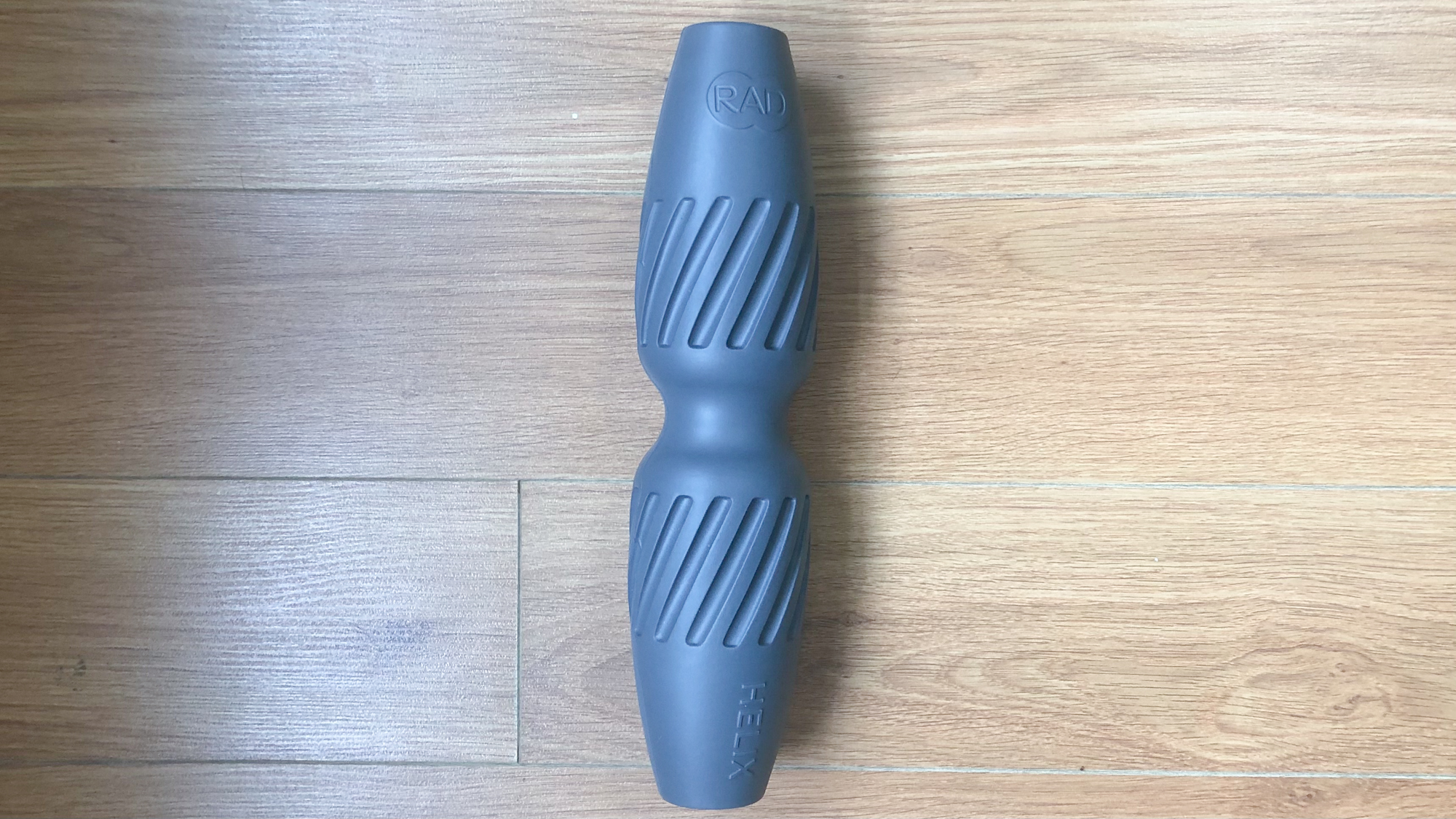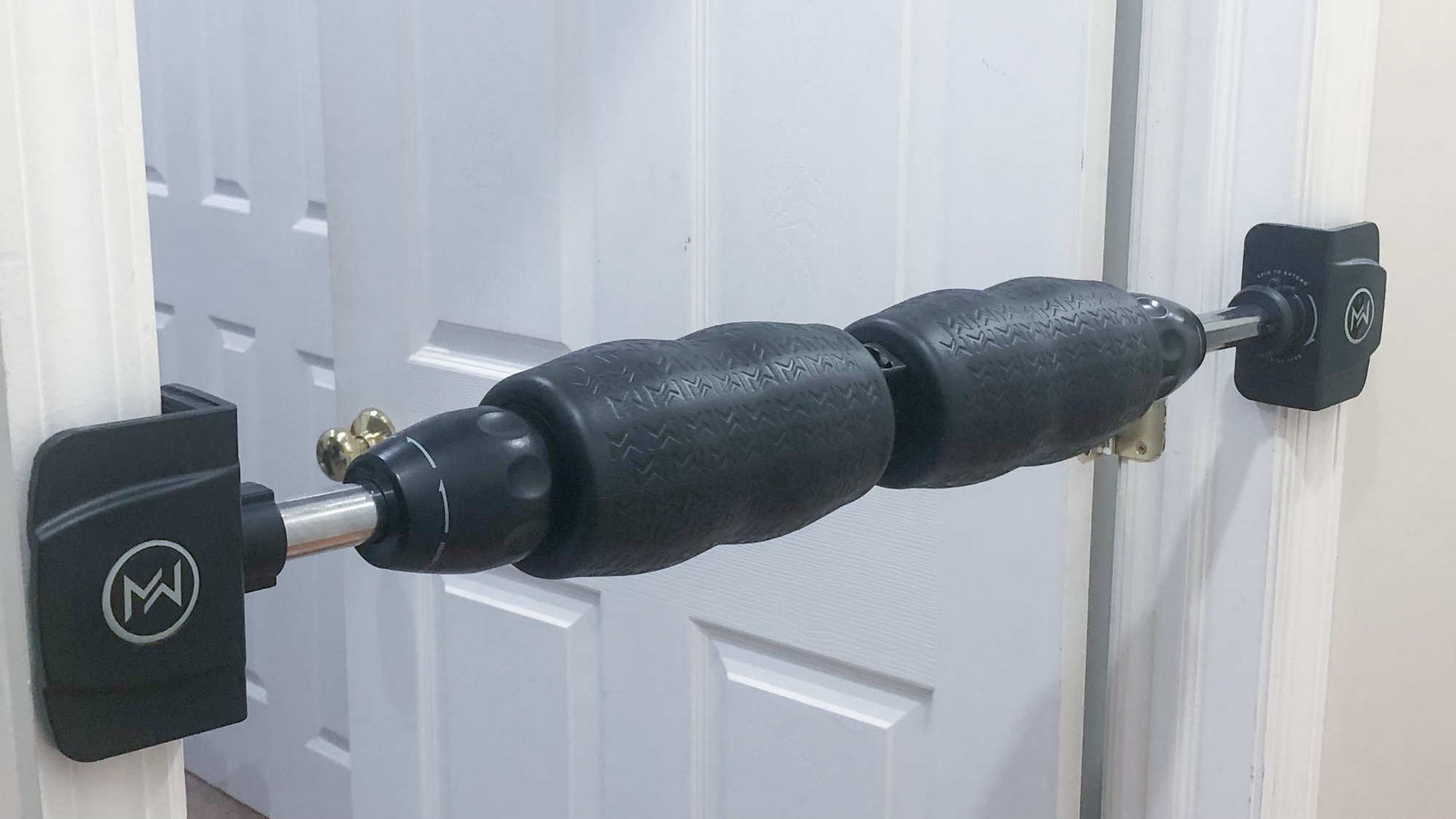11 best foam rollers: tested and reviewed by our team
We put the best foam rollers to the test, including models from Lululemon, TriggerPoint and Rumble, to help you boost recovery.
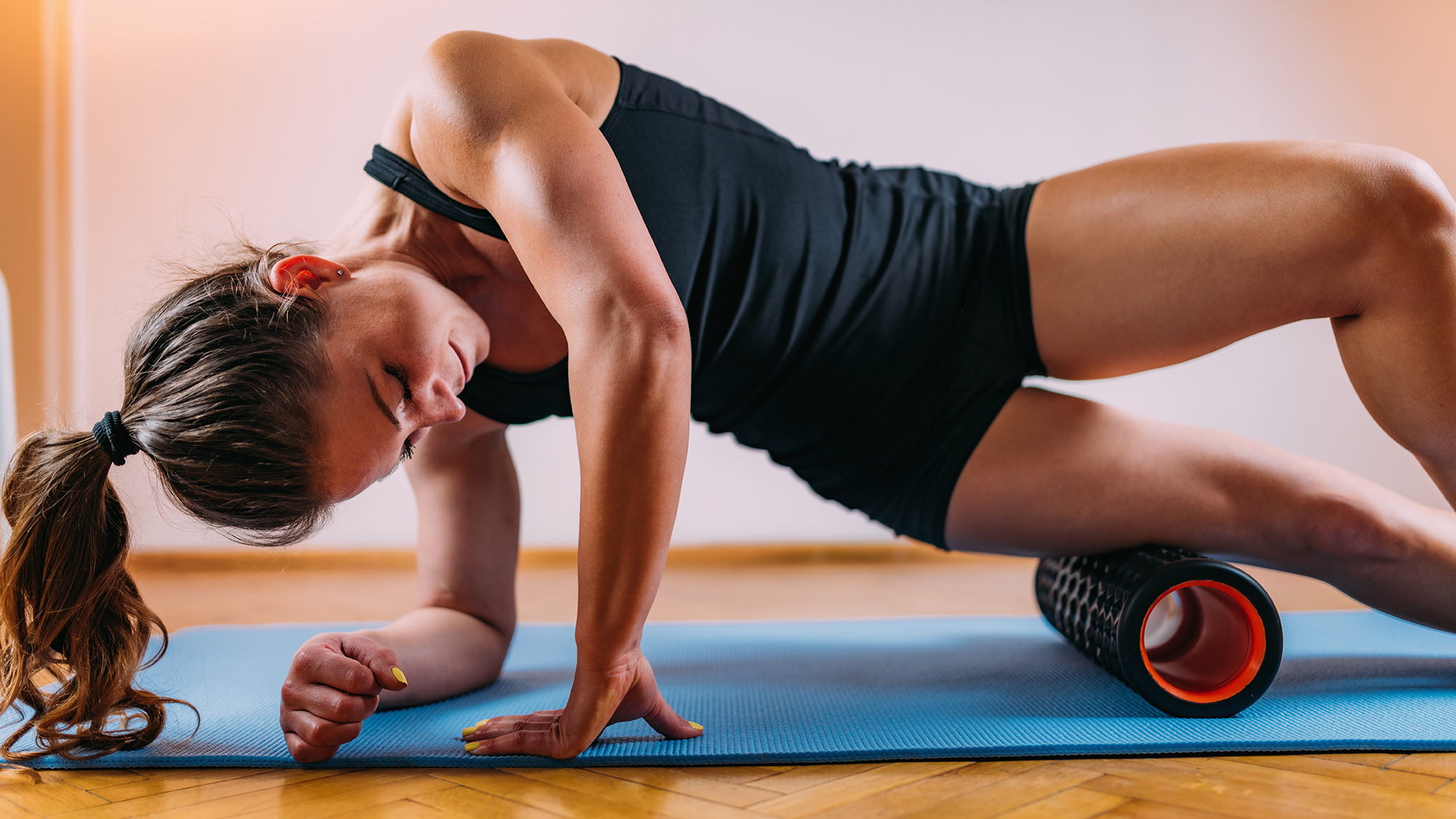
The best foam rollers are designed to lessen post-workout soreness known as DOMS, so if you're looking for an affordable tool to aid your recovery, you're in the right place.
Foam rolling is a self-myofascial release (SMR) technique that helps to relieve tension in your connective tissues. Depending on the density and texture of the foam roller you use, and what part of the body you use it on, rolling may feel similar to a sports massage.
We put the best foam roller brands to the test across various price points, densities, designs and sizes. We've only included our favorites below, so be sure to check out our advice before you purchase one. Once you have, check out the best foam roller exercises and foam roller workouts before you begin.
Quick list
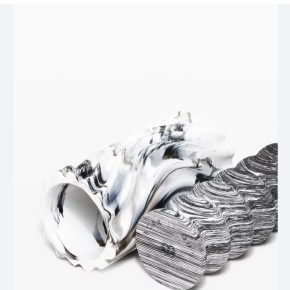
The Lululemon Double Roller is the best foam roller and one of the most versatile foam rollers on the market. Its interlocking design has a softer exterior roller that provides appropriate pressure to overworked muscles and a denser interior roller.
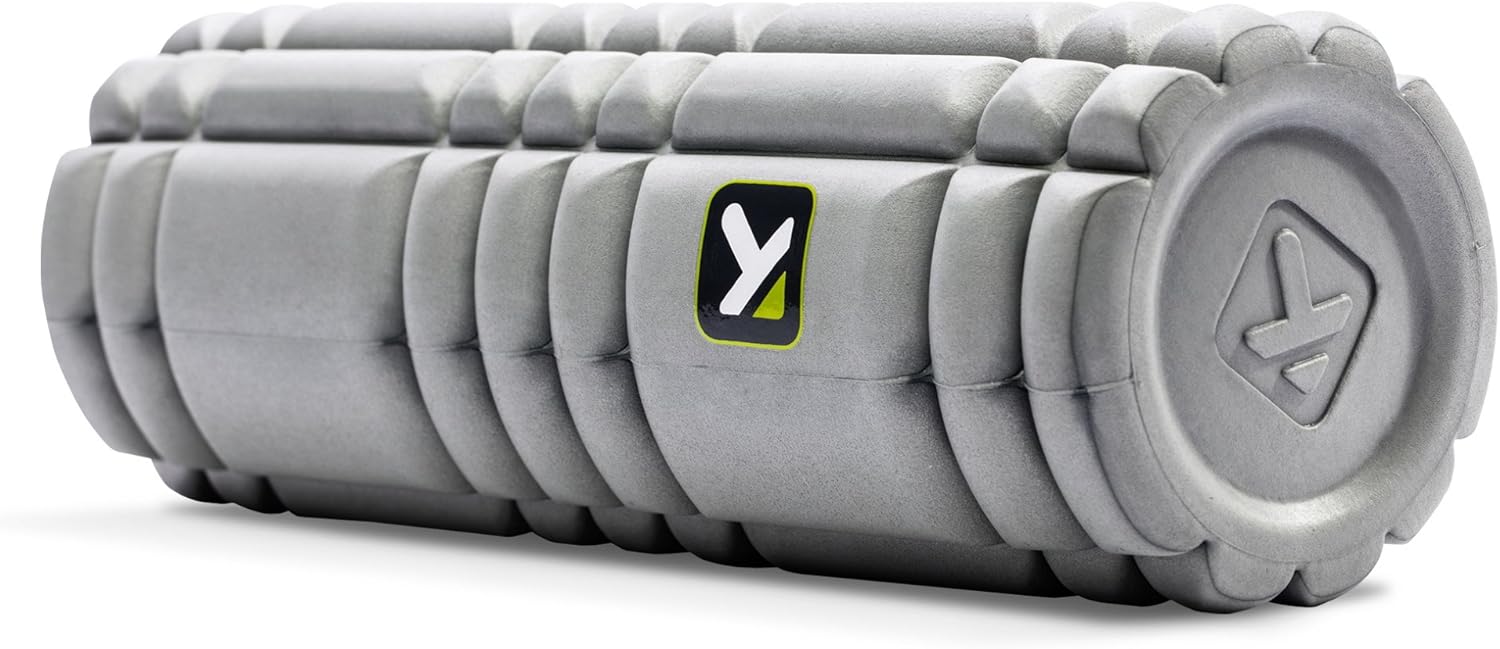
Rolling with the TriggerPoint Core is like hiring a masseuse for a fraction of the expense. Constructed with EVA foam for a moderate firmness with a bit of give, a patented GRID texture allows for even pressure — all for a fraction of the cost.
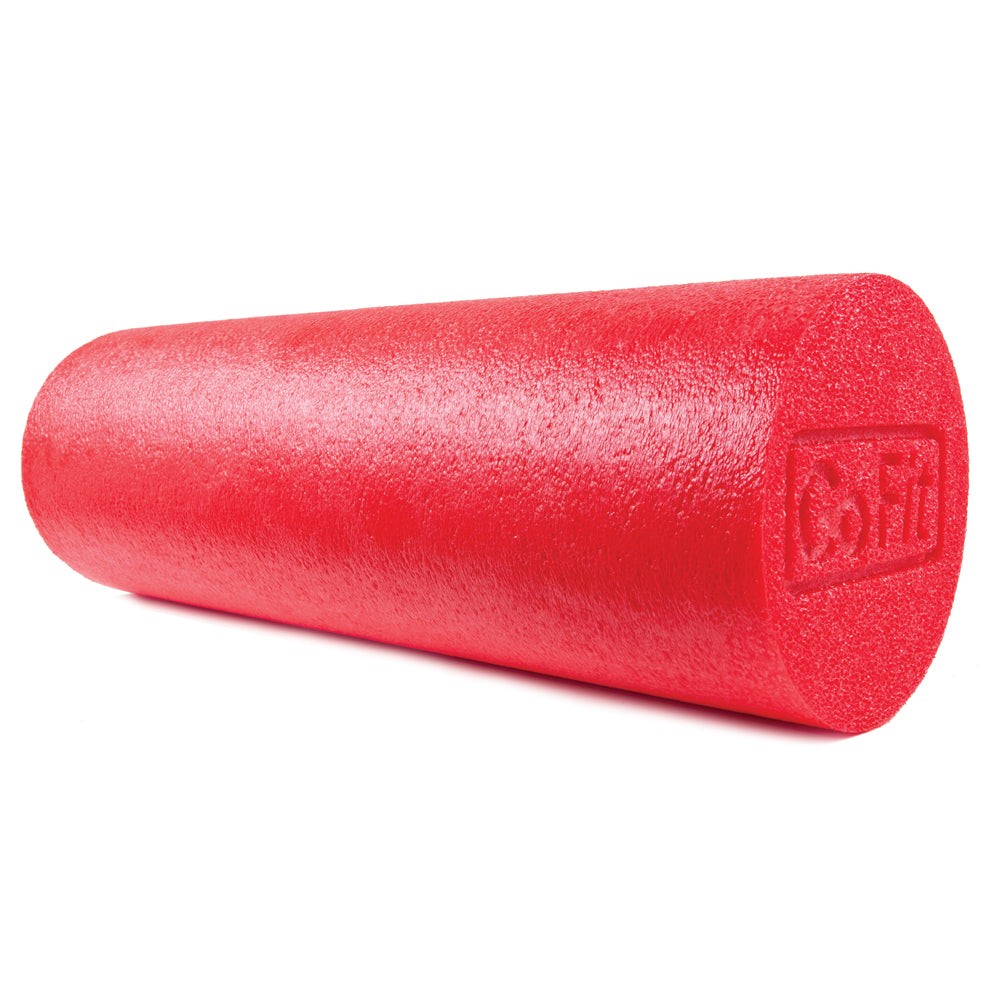
The GoFit Foam Roller is an ideal introductory roller for newcomers. The density is firm enough to alleviate muscle pain, but not so firm that a first-time user will be scared away from a regular SMR regimen. This one eases you in nicely.
Best foam rollers available now
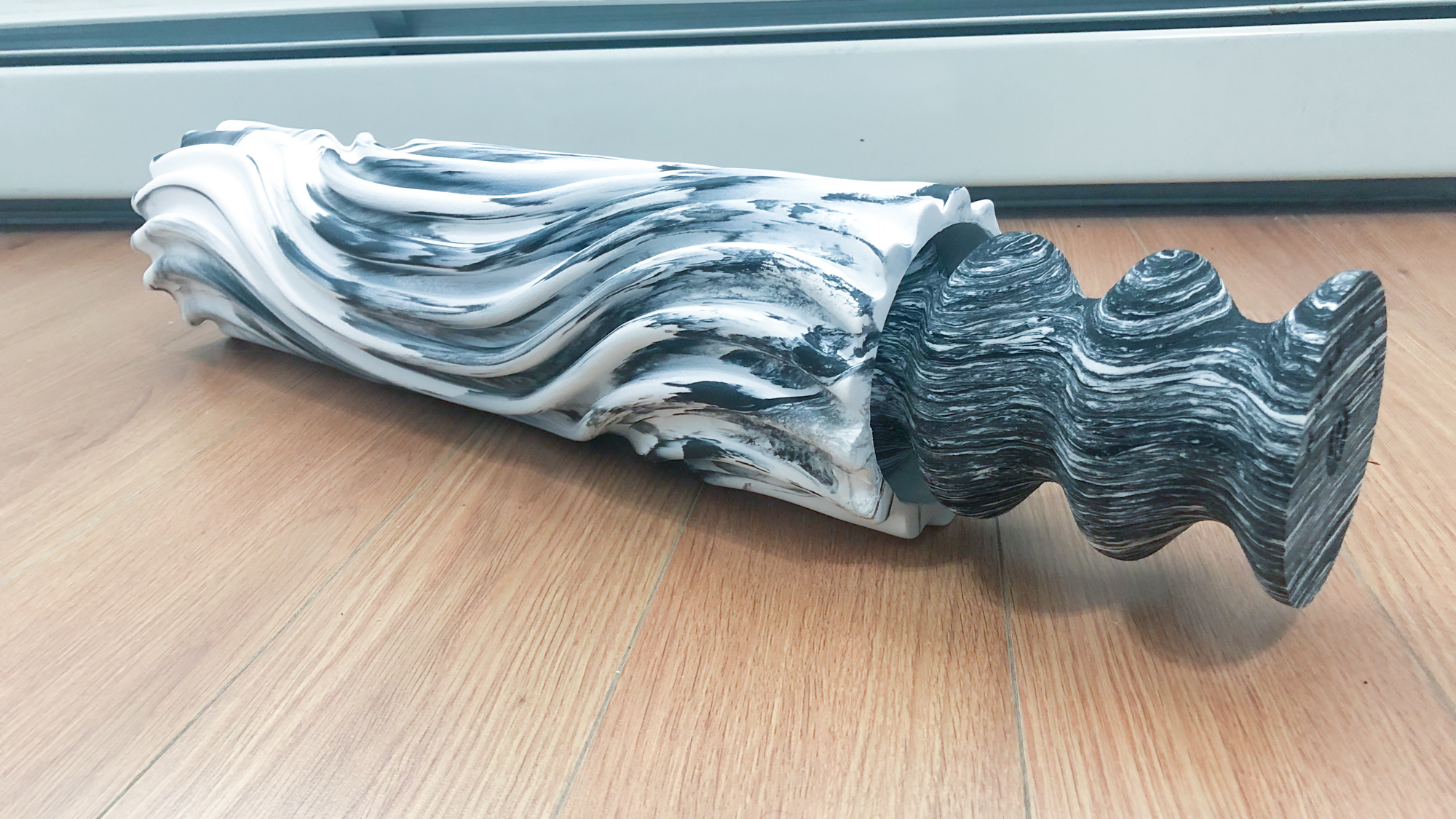
1. Lululemon Double Roller
Our expert review:
Specifications
Reasons to buy
Reasons to avoid
The Lululemon Double Roller is the best foam roller on our list, as it’s one of the most versatile foam rollers on the market. Its interlocking design is made up of a softer exterior roller that provides appropriate pressure to overworked muscles in the arms and legs, and a denser interior roller that digs into tougher-to-treat spots in the back.
While plenty of foam rollers can be used along thicker tissues in the hips and lower body, it’s not so often you’re able to find a great roller for the upper body. That’s where the slightly grooved, moderately dense outer roller really shines. I’m notoriously tight in the lats (latissimus dorsi, a large muscle that runs along the back side of the torso), and using the outer roller on them provided enough pressure to hit knotted areas without feeling like I was bruising a rib.
The wavy texture of the inner roller is great for targeting stiff muscles in your back, but it’s also a useful tool to address tense spots in your quadriceps (the muscles in the front of the thigh) and hamstrings (muscles in the back of the thigh). I even used it to provide relief for the bottoms of my feet after a long run. The inner roller is slightly firmer with a deeper, more rigid texture than the outer roller, so it may be a bit too intense for some.
The Lululemon Double Roller’s 20-inch length is appropriate to use on most major muscle groups, and its two-in-one design is both easy to store and cost-effective, which has to be the first time in history I’ve used the words “Lululemon” and “cost-effective” in the same sentence.
When you want one roller (or two) for all of your body’s trigger points, the Lululemon Double Roller fits the bill.
Best budget foam roller
2. TriggerPoint CORE Multi-Density Solid (12-inch)
Our expert review:
Specifications
Reasons to buy
Reasons to avoid
Rolling with the TriggerPoint Core is like hiring a masseuse for a fraction of the expense.
Constructed with EVA foam for a moderate firmness with a bit of give, the TriggerPoint Core’s patented GRID texture allows for even pressure across tight musculature in your body — all for $20.
The GRID pattern is a major plus to this small but mighty roller. The high and firm squares, located on the middle and sides of the Core, are great for dense connective tissues. I used these sections on the stubborn knots in my calves and the tension was perfect. There are also tubular grooved sections of the roller that mimic the grip of extended fingers, and longer, flat sections that mimic the palm of a hand.
The TriggerPoint’s small, manageable size is both an advantage and a disadvantage. At 12 inches long and 4 inches in diameter, it easily fits into any gym bag, carry-on, or backpack. It’s super lightweight and doesn’t take up a ton of space. That being said, I sometimes found the size too small to target certain larger areas of my body successfully.
It would be extremely difficult to roll both hamstrings or quadriceps at once, unless you’ve got a very petite frame. Fortunately, TriggerPoint offers their Core roller in both 18- and 36-inch lengths if you’re looking for something a little longer.
Like the Lululemon Double Roller, the TriggerPoint is a multifaceted roller with diverse textures, equipped to handle many common tight spots. And at a very affordable price, you can rest assured that one of those tight spots won’t be your wallet. If you’re looking for a solidly made and effective foam roller that won’t break the bank, the TriggerPoint Core Foam Roller is your answer.
Best foam roller for beginners
3. GoFit Foam Roller (36-inch)
Our expert review:
Specifications
Reasons to buy
Reasons to avoid
The GoFit Foam Roller is a fantastic introductory roller for newcomers. With a density firm enough to alleviate overactive muscles, but not so firm that a first-time user will be scared away, using the GoFit is an excellent way to begin a regular SMR regimen.
The GoFit is constructed with PE foam, which is a benefit for anyone who hasn’t tried rolling before. It’s less firm than other rollers, which will allow uninitiated muscles a better opportunity to acclimate to the technique.
Even though this roller has a softer feel, it can still provide some relief to the experienced roller. I foam roll regularly, and was able to use the GoFit on my lats and piriformis (a muscle located deep in the buttocks region) to release long-standing tightness. GoFit includes an extensive training manual on how to target areas in your back, hips, and legs, which is another big plus for beginners.
The downside to the GoFit’s PE foam construction is its durability. Rollers made from PE foam are known for warping after prolonged usage, becoming thinner and worn over time. Since the GoFit we tested is 36 inches long, you can try to avoid this outcome by using different areas of the roller with each session. (GoFit also sells a 24-inch model).
Another downside to PE foam is that because it’s less dense, it may not be firm enough for a long-time user. I tried the GoFit on my tight quads and while it felt fine, it didn’t pack as strong a punch as some of the other rollers we recommend.
If you’ve been meaning to give foam rolling a try, but don’t want to cry during your workouts any more than you already do, the GoFit Foam Roller is a great find.
Best foam roller for very tight muscles
4. Rumble Roller (Mid-Sized, Firm)
Our expert review:
Specifications
Reasons to buy
Reasons to avoid
The Rumble Roller looks and feels like a Medieval torture device; a rolling session may leave you wondering if you wronged King Arthur in a past life. But with its extra firm density and bumpy texture that mimics intense thumb pressure, the Rumble Roller can target even the toughest trigger points and greatly improve mobility.
No matter how many times you’ve used a foam roller, your first time on the Rumble Roller will hurt. It will probably continue to hurt the second, third, and sixtieth time you hop on. However, the positive effects are immediate. After 30 seconds of rolling my incredibly tight quads, piriformis, and TFL (a muscle on the outer back side of the hip), my hips felt warm and my range of motion increased.
And for all the pain you endure on the Rumble Roller, once you’re off of it, you might find that a lot of the aches you started with have disappeared. The 22-inch length was perfect for hitting all my super-tight areas, and the EVA/polyolefin foam construction won’t degrade with time or usage. (It’s also available in 13- and 31-inch lengths).
The Rumble Roller shouldn’t be your first foam roller, and it shouldn’t be your only foam roller. We tested the XFirm model, which is not advised for use on thinner, less dense muscle or tissue. Used correctly, though, this roller can make a world of difference.
Full disclosure: this isn’t my first rendezvous with the Rumble Roller. I credit its use for helping me get back to running after a nasty bout of IT Band Syndrome, an overuse injury affecting the knee.
This foam roller is not for the faint of heart. But if you’ve got a grueling workout regimen and seriously tight muscles that a basic foam roller can’t touch, then the Rumble Roller could be your dream (or nightmare) come true.
Best vibrating foam roller
5. Hyperice Vyper 2.0
Our expert review:
Specifications
Reasons to buy
Reasons to avoid
Amp up your foam rolling routine with the Hyperice Vyper 2.0. Flip a switch on the side and choose from three vibration intensities, all designed to increase mobility, flexibility, and circulation.
Adding a vibrating roller to your warm-up can help improve blood flow, which will result in a warmer muscle before activity. But vibrating foam rollers can also help decrease the typical pain felt with a foam rolling routine, which is helpful when working on tense muscle groups.
This was the case when I tried the Vyper on my quads and glutes (buttocks), two areas that usually make me wince. The added vibration affected the knots in those tissues more acutely, while also promoting a greater relaxation of the muscle (which I definitely felt).
Due to its hardware, the Hyperice Vyper is one of the pricier rollers on our list. It has a powerful, high-intensity vibrating core and rechargeable lithium-ion battery. The vibrating core also means it’s a lot noisier than your run-of-the-mill roller. In fact, using the Vyper on the highest vibration setting shook the walls of my apartment so much that I started to worry about disturbing my neighbors. If it did that to my walls, I can only imagine what it was doing to my quads.
Made of the highest-density EPP foam, the Vyper can withstand a lot of use. While it’s not as compact and portable as the TriggerPoint, it can still fit in a gym or large tote bag. And since the lithium battery is TSA-approved, you can throw the Vyper into your carry-on to relieve any post-flight stiffness.
The Hyperice Vyper may not be the most economical choice, but if you’re in the market for a Porsche among foam rollers, it’s well worth the expense.
Best foam roller for neck and shoulders
6. LO ROX Aligned Life Mini Infinity Roll
Our expert review:
Specifications
Reasons to buy
Reasons to avoid
The neck and shoulders are notoriously hard to hit with standard foam rollers, which are usually too cumbersome and firm to effectively address tightness in smaller, more sensitive muscle groups. That’s why the LO ROX Aligned Life Mini Infinity Roll is a total game changer.
Made of a softer density foam and with a tapered design that won’t compress your cervical spine, the Mini Infinity roll can provide long-awaited relief to the overworked and often neglected muscles in the back of your neck. Using it on that area felt amazing. spending hours on my computer (and even more hours on my phone), the mild pressure from ball-like ends of the roll released a lot of tension I didn’t even know I had.
The Mini Infinity roll is also well suited to hit the upper, middle, and lower trapezius muscles around and in between the shoulder blades. Previously, I’d have to rely on a rock-hard lacrosse ball to target those muscles, which would sometimes cause even more pain and inflammation. But by using the Mini Infinity roll, I was able to dig into trigger points with just the right amount of tension. I could even tell the difference in the next day’s workout: weighted rows felt easier and less constricted.
We’ve chosen the Mini Infinity roll as the best foam roller for neck and shoulders, but it’s also great to use on the bottoms of your feet, parts of your lower back, and muscles in your chest (like the pectoralis, or “pecs”). While it may not be firm or long enough to work everywhere, it’s a fantastic option for tough-to-target spots.
Endlessly powerful despite its “mini” nomenclature, the LO ROX Aligned Life Mini Infinity Roller is a must-have for upper body mobility.
Best foam roller for hips and legs
7. RAD Helix
Our expert review:
Specifications
Reasons to buy
Reasons to avoid
With a design inspired by strands of DNA, the RAD Helix looks a little different than some of our other selections. But beyond looking cool, this interesting layout allows for focused compression of commonly overused muscles in the lower body, without putting pressure on bones or other sensitive spots.
As anyone after a squat day or a long run can attest, the legs and hips can get super tight. Yes, we’re talking quads, hamstrings and calves, but let’s not forget the muscles around our shins, like the tibialis anterior. That’s where the Helix outpaces the competition. The tapered design of the Helix allows you to address muscular tension without any painful pressing on the shinbone itself. I have to admit I’ve never actually foam rolled the tibialis area before. But after trying it out on the Helix, now I know that I need to (often).
The Helix is also fantastic to use on the hips and upper sections of the leg. The outside of my quads are frequent flyers on the foam roller, but targeting them with the Helix was a new experience. I usually have to shift back and forth on the roller so that I don’t put too much pressure on my IT Band (connective tissue that runs down the outside of the thigh). But with the Helix, I was able to avoid unwanted tension on the IT Band while being able to really dig into my lateral quadriceps.
The Helix can be used with additional tools sold by RAD, like a RAD Rod, that expand the way it can be utilized. Another huge plus is the RAD Mobility App that lets users choose exercises based on the products they own, the areas they want to target, or the sports and activities they enjoy.
The Helix is a multipurpose roller that can benefit your whole body, but because of its unique properties, it’s the best foam roller for anywhere below the torso.
Best foam roller for backs
8. Chirp Wheel+ (Medium)
Our expert review:
Specifications
Reasons to buy
Reasons to avoid
It’s not often that the erector spinae, a large grouping of muscles surrounding the spinal column, gets a lot of foam-rolling attention. While the back is a common tight and overworked section of the body, using a traditional roller on the area is usually not recommended, as it can put undue pressure on the spine. That’s where the Chirp Wheel+ comes in.
The Chirp’s patented “spinal canal” cushions the sensitive discs and vertebrae of your backbone while applying pressure to all the right places. I tested the 10-inch Wheel+, which supplied a moderate level of tension, and it felt like a dream. As I positioned myself on it, I immediately felt a release through my lumbar (lower) spine that continued as the wheel made its way up to my shoulders.
And since its rigid core can support weights up to 500 pounds, I felt comfortable allowing the wheel to take my full body weight. Several satisfying back cracks later, I felt like I had been given a new spine.
While the medium wheel felt just right for me, Chirp also offers their Wheel+ in a larger 12-inch diameter “Gentle” wheel that disperses pressure more evenly or a smaller and firmer 6-inch “Deep Tissue” wheel that provides more intense and direct pressure to the erector muscles.
The Wheel+ does wonders for the back, but because of its design and diameter, it's not as easily used on other parts of the body. Rolling out my glutes, hamstrings, and calves wasn’t impossible, but it didn’t feel as powerful or productive as using some of the more conventional foam rollers we selected. But the Chirp Wheel+ can show the muscles of your back some long-overdue love safely and effectively.
Best foam roller for hard to reach places
9. Mobility Wall Smooth Roller
Our expert review:
Specifications
Reasons to buy
Reasons to avoid
In all my years of foam rolling, I’ve never successfully rolled my biceps. Attempting to do so with a regular foam roller is both comical and a waste of time. I’ve used smaller SMR tools, like lacrosse balls or rolling sticks, but they never seem to do the trick. That all changed with the Mobility Wall.
The Mobility Wall takes a standard foam roller and puts it on a revolving rod that fits between most door frames. Installing it isn’t difficult or permanent, which means you can adjust its position to hit various muscle groups. Placing the Mobility Wall slightly below my shoulder, I was finally able to give my biceps a well-deserved release.
Raising the Wall a little higher, I was able to press into the tops of my upper trapezius (shoulder), another tough area to foam roll conventionally. The smooth and firm roll of the Mobility Wall provided a nice, even pressure to these areas. The hardball attachment is also useful for releasing trigger points around your shoulder blades.
While the Mobility Wall is our choice for hard-to-reach muscle groups, you can use it anywhere on your body (as its extensive online video library shows). This makes the Mobility Wall a fantastic option for anyone who has trouble getting down on the floor, where most foam rolling takes place.
The downside to this design is that some users may find they’re not able to produce enough pressure without the added help from gravity. I tried the Wall on my quads and hamstrings, and while the sensation was nice, it didn’t necessarily feel like it was doing the work of a traditional foam roller.
The Mobility Wall brings foam rolling to new heights and promises release for even the hardest-to-reach muscles in your body.
Best foam roller for Bluetooth
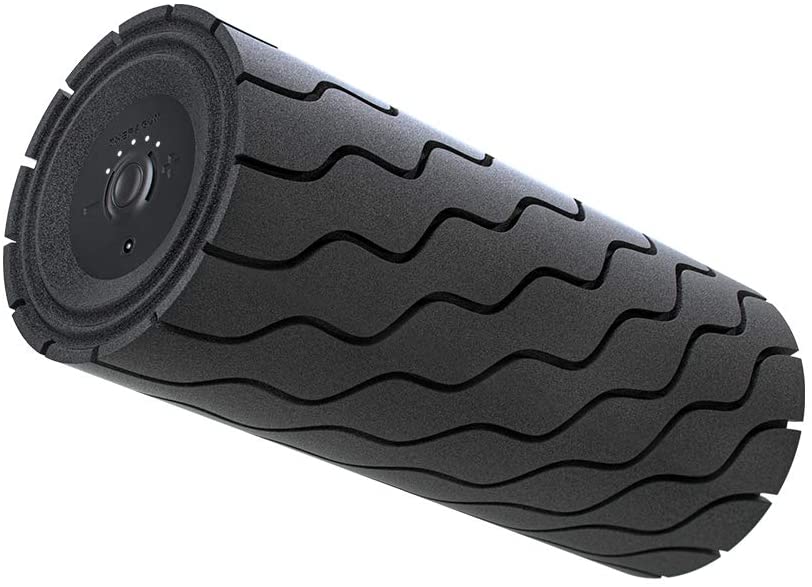
10. Theragun Wave Roller
Our expert review:
Specifications
Reasons to buy
Reasons to avoid
If you're not really sure how to foam roll, the Theragun Wave roller is a great recovery tool to have in your kit bag. It connects to your phone via Bluetooth and can be used alongside the Therabody app for personalized foam rolling routines based on your needs. The roller has five different vibration settings and the wave grooves are designed to apply optimal pressure to tired muscles. The Theragun Wave comes with a charger and a travel bag, so you can keep your roller safe on the move.
The downsides here conform with other vibrating foam rollers - they are noisier than your typical foam roller, and the Theragun Wave is definitely on the noisier end of the spectrum. While this might not bother all users, if you're worried about drawing attention to yourself in the gym or waking a sleeping child early in the morning or late at night. You also need to remember to charge your roller. This one has a very decent 180-minute battery life, but it's still something else to worry about charging.
Best foam roller for midrange

11. Pvolve Precision foam roller
Our expert review:
Specifications
Reasons to buy
Reasons to avoid
Jennifer Aniston raves about Pvolve and now you can own the Precision foam roller that comes with the Pvolve kit. During testing, it proved extra firm and wrestles tight muscles well, but this may make it unsuitable for beginners.
We love the grooves that help you tease out knots and the easy-stash size. This is perfect for post-rollouts after Pvolve classes, and you even get a 7-day trial of the Streaming Membership and 1-1 trainer consultation after purchase.
For a midrange option, we're impressed. That said, there are no bells and whistles, although it is durable and stores well in a cool and dry place.
How we test the best foam rollers
To help us determine the best foam rollers, we tested the selections on our list in a few different ways.
Each foam roller (except the LO ROX Mini Infinity Roller) was used on the medial and lateral quadriceps, hamstrings, calves, TFL, piriformis, and gluteus muscles of each leg and hip for 30 seconds.
The Lululemon Double Roller, TriggerPoint Core, GoFit, Hyperice Vyper, RAD Helix, and Mobility Wall were used on the latissimus dorsi muscle for 30 seconds. The Lululemon Double Roller was also used along the erector spinae muscles in the back and along the bottoms of the feet.
The LO ROX Mini Infinity Roller and the Mobility Wall were used on the upper, middle, and lower trapezius muscles for 30 seconds. The Mini Infinity roller was also used on muscles surrounding the upper part of the neck, the bottoms of the feet, the erector spinae muscles in the back, and the pectoralis major. The Mobility Wall was used on the biceps, as well.
The RAD Helix was rolled on the tibialis anterior muscle in the shins for 30 seconds. The Chirp Wheel+ was rolled along the erector spinae and the middle and lower trapezius muscles for 30 seconds. Each foam roller was also evaluated for density, texture, durability, portability, and general usability.
FAQs
What material foam roller should I buy?
Foam rollers vary greatly in size, firmness, texture, and shape. They’re made from materials such as polyethylene (PE), Ethylene Vinyl Acetate (EVA), and Expanded Polypropylene (EPP) foam. Some of the selections on our list have reinforced plastic cores to ensure structural stability and durability.
Selecting the right foam roller will depend on a few factors. If you’re just starting a foam rolling program, you’ll want to look for a longer roll with a softer density and smooth texture.
These types of rollers, which are often made of PE or EVA foam, will allow you to target larger muscle groups more easily and give your body time to adapt to the process. Softer, lower-density foam rollers can help your muscles and tissues get used to the practice.
If you’ve been foam rolling for a while and are looking for a step up from the basics, you may want to invest in a specialty roller that has a unique shape or firmer, more defined textures. Often, firmer rollers are constructed from EPP foam.
Using any foam roller on “knots” or “trigger points” will stimulate small receptors, helping muscle tissues to relax and lengthen. When used as part of a warm-up or cool-down, foam rolling can promote an optimal joint range of motion, aid in correcting maladaptive movement patterns and prevent potential injuries.
Can I use a foam roller if I'm injured?
You’ll also want to think about any injuries you’ve had, any known muscle imbalances impacting your movement, and any commonly stiff zones in your body. For example, if you know you suffer from lower back tightness, you’ll want to look at a roller specifically designed to be used in that area.
If you're currently rehabilitating an injury, check with a qualified professional before starting a new exercise regimen or foam rolling recovery practice, just to be sure.
Should I get a bumpy or a smooth foam roller?
As you'll see from the foam rollers on the list above, different foam rollers have different textures - some are smooth, others have bumps or ridges. If you can, try a couple at the gym to work out which feels best, but often it's best to go for a foam roller with a ridge that can work into tight muscles.
Finally, you’ll want to think about how and when you’ll be foam rolling. If you’d like a roller you can bring with you to work, the gym, and on vacation, you’ll want to pay attention to length and diameter measurements and overall portability. If you’d rather your rolling sessions stay off the floor, you’ll want to look for a roller that can be used seated or standing.
Get instant access to breaking news, the hottest reviews, great deals and helpful tips.

Jane McGuire is Tom's Guide's Fitness editor, which means she looks after everything fitness related - from running gear to yoga mats. An avid runner, Jane has tested and reviewed fitness products for the past five years, so knows what to look for when finding a good running watch or a pair of shorts with pockets big enough for your smartphone. When she's not pounding the pavements, you'll find Jane striding round the Surrey Hills, taking far too many photos of her puppy.
- Sam HopesFitness Editor and Coach

